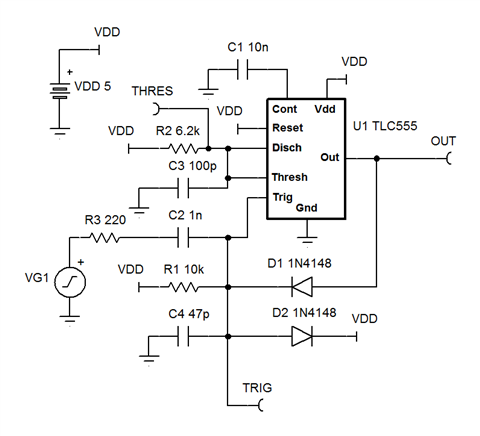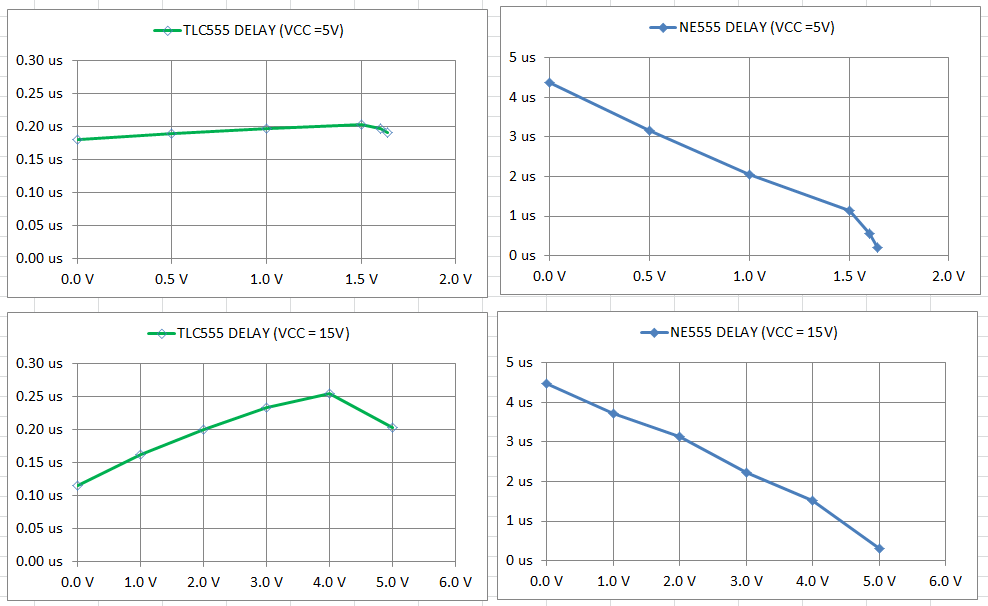Other Parts Discussed in Thread: NE555
In the newest datasheet for the TLC555 (SLFS043H), on page 10 it states:
When the trigger is grounded, the comparator storage time can be as long as 10 μs, which limits the minimum monostable pulse
width to 10 μs.
Obviously, the astable operation cannot reach 2MHz with this 10us limitation, so my understanding is this delay is not evident when the trigger voltage is 1/3 of Vcc. A graph of trigger voltage vs. delay would be most helpful. If the CONT pin is used to lower the trigger voltage, at what point does this comparator storage time start to show up? Also, earlier datasheets don't mention this problem. Is this because it was only recently discovered, or was this problem created by a die modification (die shrink)?
Thanks,
Dave G.



